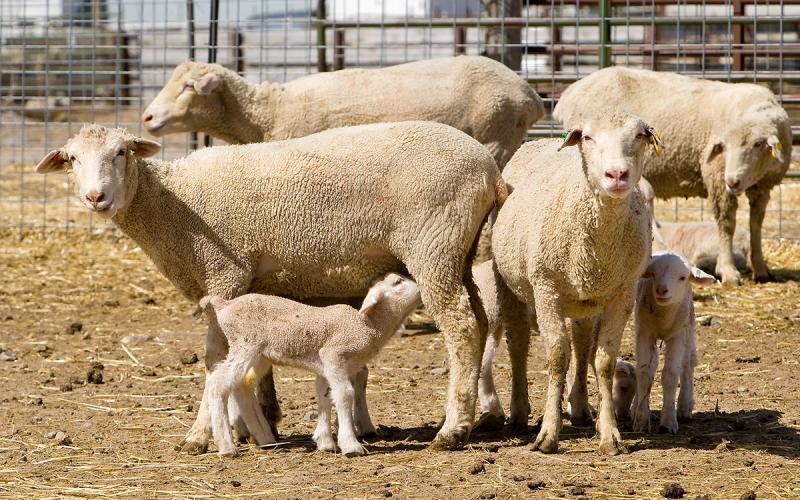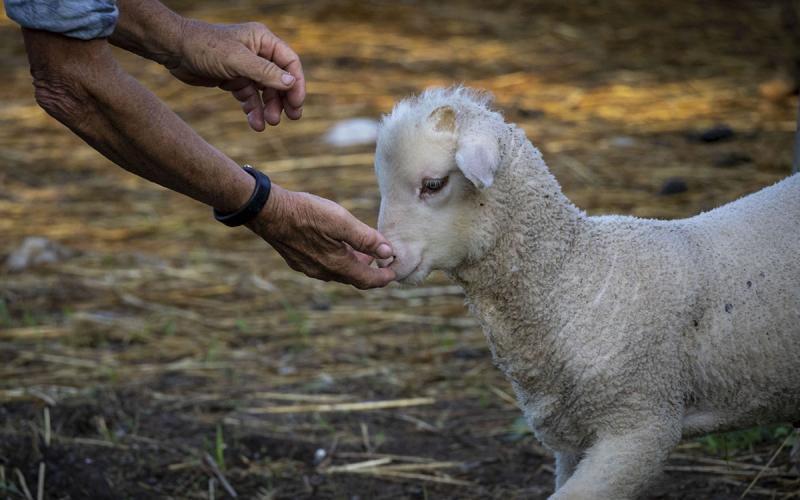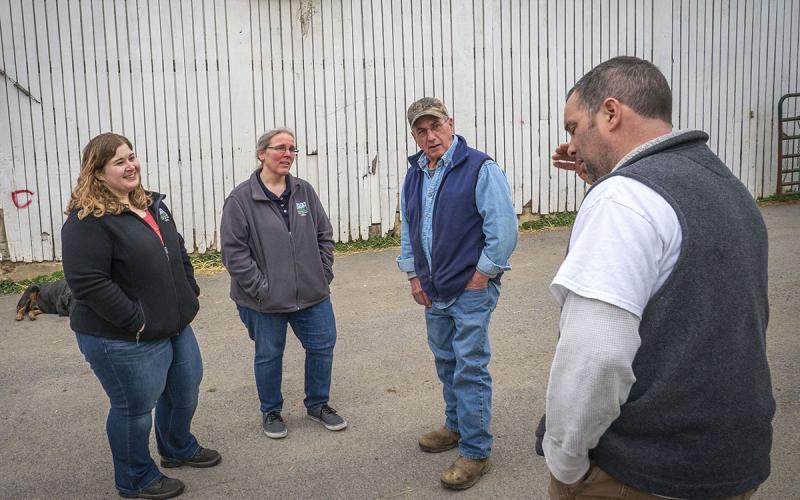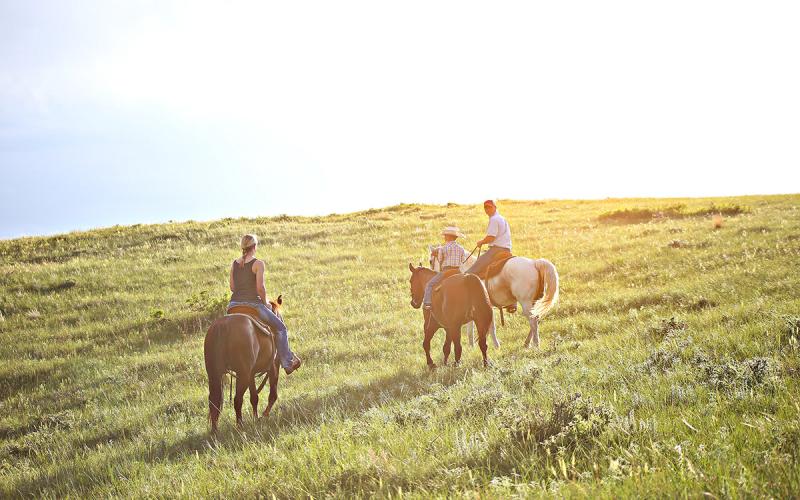Written by Mara Johnson under the direction and review of Jaelyn Whaley.
Recent years have seen above-average summer highs in South Dakota, with July and August temperatures often 2 to 4 degrees Fahrenheit warmer than long-term norms. For ewes bred in late May or June and lambing in September or October, this means the last 4 to 6 weeks of pregnancy align with peak summer heat that can quietly diminish flock performance by affecting ewe labor, lamb vigor, and milk yield (see Heat Stress in Small Ruminants).
Key Impacts of Heat Stress
Problematic Labor and Dystocia
- High temperatures can cause maternal dehydration and electrolyte imbalance, weakening uterine contractions and potentially prolonging labor.
- Longer or more difficult lamb delivery increases labor costs and the chance of both ewe and/or lamb losses.
Reduced Lamb Vigor and Survival
- Stress reduces placental nutrient and oxygen delivery, resulting in smaller, less active lambs.
- Weak lambs are slower to stand and nurse, increasing the risk of starvation losses.
- Even moderate heat exposure late in gestation can impair vigor at birth.
Lower Milk Yield and Colostrum
- Heat stress depresses milk yield even when feed intake is adequate.
- Reduced colostrum volume or delayed milk let-down can affect early lamb growth and passive immunity.
Management Strategies for Fall-Lambing Operations

Recognizing Heat Stress
Signs of heat stress in ewes may include:
- Rapid breathing or panting.
- Lowered and extended neck posture.
- Reduced feed intake.
- Drooling.
- Seeking shade or isolation from the flock.
- Lethargy or reluctance to stand/move.
Managing Heat Stress
Provide Shade and Airflow
- Use shade cloths, open windows/large doors, open-sided barns, or natural shelterbelts.
- Ensure proper ventilation and avoid crowding pens.
- Position any mobile shelters to capture prevailing breezes for maximum cooling.
Maintain Water Access
- Provide multiple clean, shaded water sources.
- Keep water cool—hydrated ewes maintain better blood flow to the uterus.
- Check flow rates and tank cleanliness often during hot spells.
Adjust Feeding and Nutrition
- Feed during cooler morning or evening hours to reduce metabolic heat.
- Offer nutrient-dense rations to counter decreased intake.
- Monitor body condition closely to avoid ewes becoming thin before lambing.
Manage Fleece for Cooling
- Shearing or crutching in midsummer can help ewes shed excess heat.
- Make sure to mind the fly populations and manage interventions if needed.
- Ewes shorn in early gestation have shown improved lamb birth weights and milk yields.
Record and Review Performance
- Track environmental temperatures, lamb birth weights, vigor scores, ewe intake, body condition scores, and milk onset.
- Compare results from hot and cool years to evaluate which strategies work best for your flock.
Conclusion
As South Dakota’s climate trend shows more frequent high-heat days and longer warm seasons, we will have to work to adapt flock management to maintain health and productivity.


